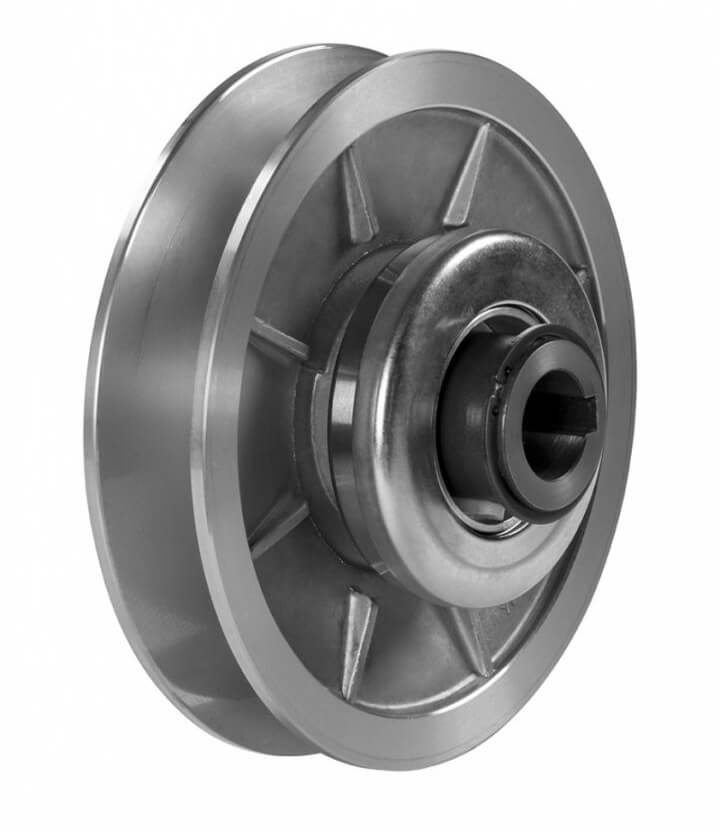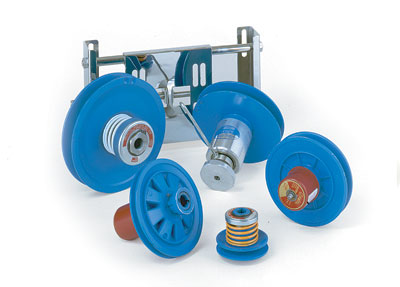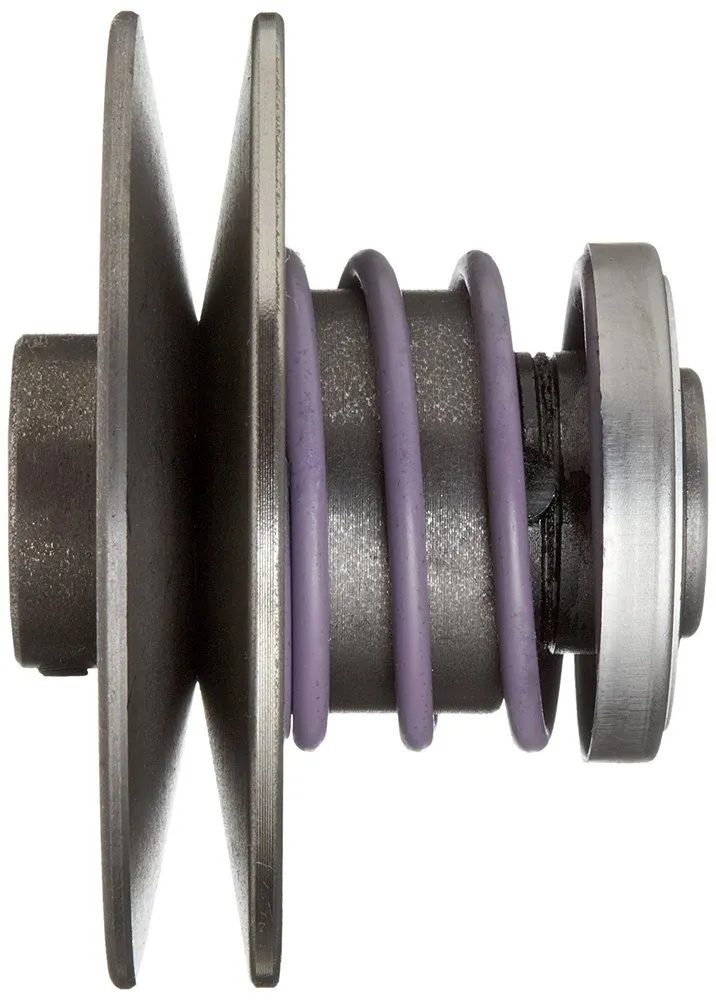Product Description
| Product Name | V Belt Pulley | Place of origin | ZheJiang |
| Brand | Mighty | Theeth Quantity | 1-10 Grooves or customized |
| Size | SPZ SPA CHINAMFG SPC | Surface treatment | Phosphate |
MIGHTY manufacture different types pulleys as follows:
1) European standard:
a) V-belt pulleys for taper bushings: SPZ, SPA, SPB, SPC; up to 10 grooves
b) Adjustable speed V-belt pulleys and variable speed pulleys
c) Flat belt pulleys and conveyor belt pulleys
2) American standard:
a) Sheaves for taper bushings: 3V, 5V, 8V
b) Sheaves for QD bushings: 3V, 5V, 8V
c) Sheaves for split taper bushings: 3V, 5V, 8V
d) Sheaves for 3L, 4L or A, and 5L or B belts: AK, AKH,2AK, 2AKH, BK, BKH,2BK, 2BKH, 3BK
e) Adjustable sheaves: poly V-pulley, multi-pitch H, L, J, K and M
Parts can be made according to drawings and/or samples, OEM service is welcomed
3) Bore type: pilot bore, finished bore, taper bore, bore for QD bushing
4) Surface finish: paint, phosphating, zinc plated
5) Material: cast iron, ductile iron, nylon, aluminum
6) Made according to drawings and/or samples, OEM inquiries welcome
| Certification: | ISO |
|---|---|
| Pulley Sizes: | Spz SPA Spb Spc |
| Manufacturing Process: | Casting |
| Material: | Iron |
| Surface Treatment: | Phosphating |
| Application: | Chemical Industry, Grain Transport, Industrial Transmission,Textile Machinery |
| Samples: |
US$ 0.5/Piece
1 Piece(Min.Order) | |
|---|
| Customization: |
Available
| Customized Request |
|---|

Can variable pulleys be retrofitted into existing machinery for performance upgrades?
Yes, variable pulleys can often be retrofitted into existing machinery to provide performance upgrades. Retrofitting variable pulleys is a common practice to enhance the functionality, efficiency, and versatility of older or fixed-speed machines. Here are some key points to consider:
- Compatibility: Before retrofitting variable pulleys, it is important to assess the compatibility of the existing machinery. Consider factors such as the design of the machine, the power transmission system, and the available space for installing the variable pulleys. Consulting with a professional or the manufacturer of the variable pulleys can help determine the feasibility of retrofitting.
- Application suitability: Evaluate whether the addition of variable pulleys will be beneficial for the specific application of the machinery. Variable pulleys are particularly advantageous in situations where speed control, load adaptation, or precise adjustments are required. Assess the performance requirements of the machinery and determine if retrofitting variable pulleys will address any limitations or improve overall performance.
- Engineering considerations: Retrofitting variable pulleys may involve engineering modifications to the existing machinery. This can include adjusting or redesigning the power transmission system, modifying the mounting or support structures, or integrating additional components for the pulley adjustment mechanism. It is crucial to consult with engineering experts or professionals to ensure that the retrofitting process is carried out safely and effectively.
- Space and clearance: Check if there is sufficient space within the existing machinery to accommodate the variable pulleys. Consider the dimensions of the pulleys, the clearance required for belt movement, and any potential conflicts with other components or systems. Adequate space and clearance are essential for the proper installation and operation of the variable pulleys.
- System integration: Retrofitting variable pulleys may require integrating additional control mechanisms or systems into the existing machinery. This can include incorporating motor controllers, sensors, or automation components to enable precise speed adjustments and automation features. Proper integration ensures seamless operation and compatibility between the retrofitted variable pulleys and the rest of the machinery.
- Professional guidance: It is recommended to seek professional guidance or consult with experts in the field of retrofitting and machinery modifications. They can provide valuable insights, assess the technical aspects, and guide you through the process to ensure a successful retrofitting project.
Retrofitting variable pulleys into existing machinery can unlock new capabilities, improve performance, and extend the lifespan of the equipment. However, it is crucial to approach the retrofitting process with careful planning, engineering expertise, and consideration of the specific requirements and limitations of the machinery in question.

How are variable pulleys customized for specific machinery and equipment?
Variable pulleys can be customized to suit specific machinery and equipment requirements. The customization process involves several key aspects to ensure optimal performance and compatibility. Here’s an overview of how variable pulleys are customized:
1. Design Considerations:
The customization of variable pulleys begins with understanding the specific machinery and equipment requirements. Factors such as the desired speed range, torque requirements, power transmission capacity, and space constraints are taken into account. These design considerations help determine the appropriate size, shape, and configuration of the variable pulley to ensure it fits seamlessly into the target system.
2. Speed Range and Ratios:
Variable pulleys can be customized to provide the desired speed range and speed ratios for the machinery. By selecting the appropriate combination of fixed and movable pulley halves, the speed range can be tailored to meet the specific operational needs. This customization ensures that the variable pulley can achieve the required speed control and variability for the machinery.
3. Load Capacity:
The load capacity of the machinery is a critical consideration in variable pulley customization. The design and materials used in the pulley construction need to be selected to handle the expected loads and torque requirements. This customization ensures that the variable pulley can effectively transmit power and withstand the forces generated during operation.
4. Belt or Chain Compatibility:
Variable pulleys are often used in conjunction with belts or chains for power transmission. Customization involves ensuring compatibility between the variable pulley and the specific belt or chain type used in the machinery. Factors such as belt width, pitch, and tooth profile are considered to ensure proper engagement, grip, and power transmission efficiency.
5. Mounting and Integration:
Customization of variable pulleys involves designing the appropriate mounting and integration features. This ensures that the pulley can be easily and securely mounted within the machinery or equipment. Mounting options may include keyways, set screws, clamping mechanisms, or other fastening methods, depending on the specific application requirements.
6. Material Selection:
The choice of materials for the variable pulley is an essential customization consideration. Factors such as durability, corrosion resistance, and weight are taken into account. Common materials used for variable pulleys include steel, aluminum, and various alloys. The material selection is based on the specific application requirements and environmental conditions in which the machinery operates.
7. Performance Testing and Validation:
Once the variable pulley is customized, it undergoes rigorous performance testing and validation. This ensures that it meets the specified speed control, load capacity, and durability requirements for the machinery. Performance testing may involve simulated operating conditions, torque and speed measurements, and endurance testing to ensure reliable and consistent performance.
By considering design requirements, speed range, load capacity, belt or chain compatibility, mounting and integration, material selection, and performance testing, variable pulleys can be effectively customized for specific machinery and equipment. This customization process ensures that the variable pulleys meet the unique performance and operational needs of the target applications.

How does a variable pulley assist in changing the speed and power transmission?
A variable pulley, also known as a variable speed pulley or a variable drive pulley, plays a crucial role in changing the speed and power transmission in mechanical systems. Let’s explore how it accomplishes these functions:
1. Speed Adjustment:
A variable pulley allows for continuous speed adjustment by changing the effective diameter of the pulley system. When the movable pulley half is positioned closer to the fixed pulley half, the effective diameter increases. This results in a larger belt or chain contact area and a higher speed ratio between the input and output shafts. Conversely, when the movable pulley half is positioned farther away, the effective diameter decreases, leading to a smaller contact area and a lower speed ratio. By adjusting the position of the movable pulley half, the speed of the driven components can be precisely controlled without the need for manual gear changes or transmission adjustments.
2. Power Transmission:
A variable pulley transfers power from the input shaft to the output shaft through the belt or chain. By changing the speed ratio, the variable pulley adjusts the rotational speed of the output shaft relative to the input shaft. This allows for optimization of power transmission in mechanical systems. For example, in applications where high torque is required, the variable pulley can be adjusted to provide a lower speed ratio, resulting in increased torque at the output shaft. Conversely, when higher speeds are desired, the variable pulley can be adjusted to provide a higher speed ratio, sacrificing some torque in favor of increased rotational speed.
3. Smooth Transitions:
One of the advantages of a variable pulley is its ability to provide smooth transitions between different speed ratios. The actuation mechanism associated with the variable pulley allows for precise and controlled movement of the movable pulley half. This enables gradual adjustments in the effective diameter, ensuring seamless speed changes without sudden jolts or disturbances in power transmission.
4. Flexibility and Adaptability:
Variable pulleys offer flexibility and adaptability in mechanical systems. They can accommodate different load conditions, operational requirements, and variations in input power. By adjusting the position of the movable pulley half, the speed and power transmission characteristics can be tailored to suit specific needs, resulting in efficient and optimized performance.
Overall, a variable pulley assists in changing the speed and power transmission by providing continuous speed adjustment, optimizing power transfer, enabling smooth transitions, and offering flexibility in mechanical systems. Its ability to precisely control speed ratios without the need for manual gear changes makes it a valuable component in various applications, ranging from automotive systems and manufacturing machinery to exercise equipment and power transmission systems.


editor by CX
2023-10-09
